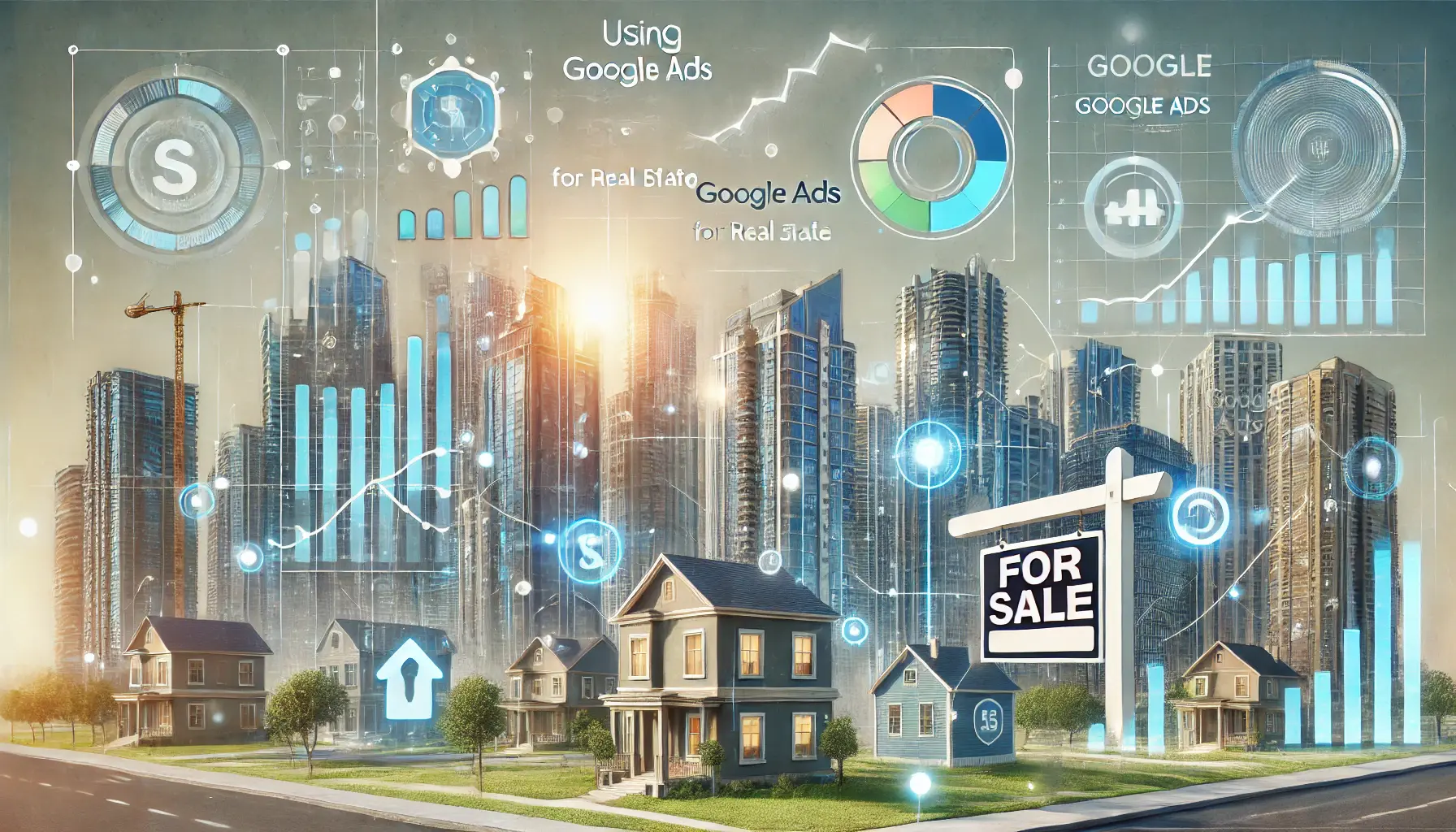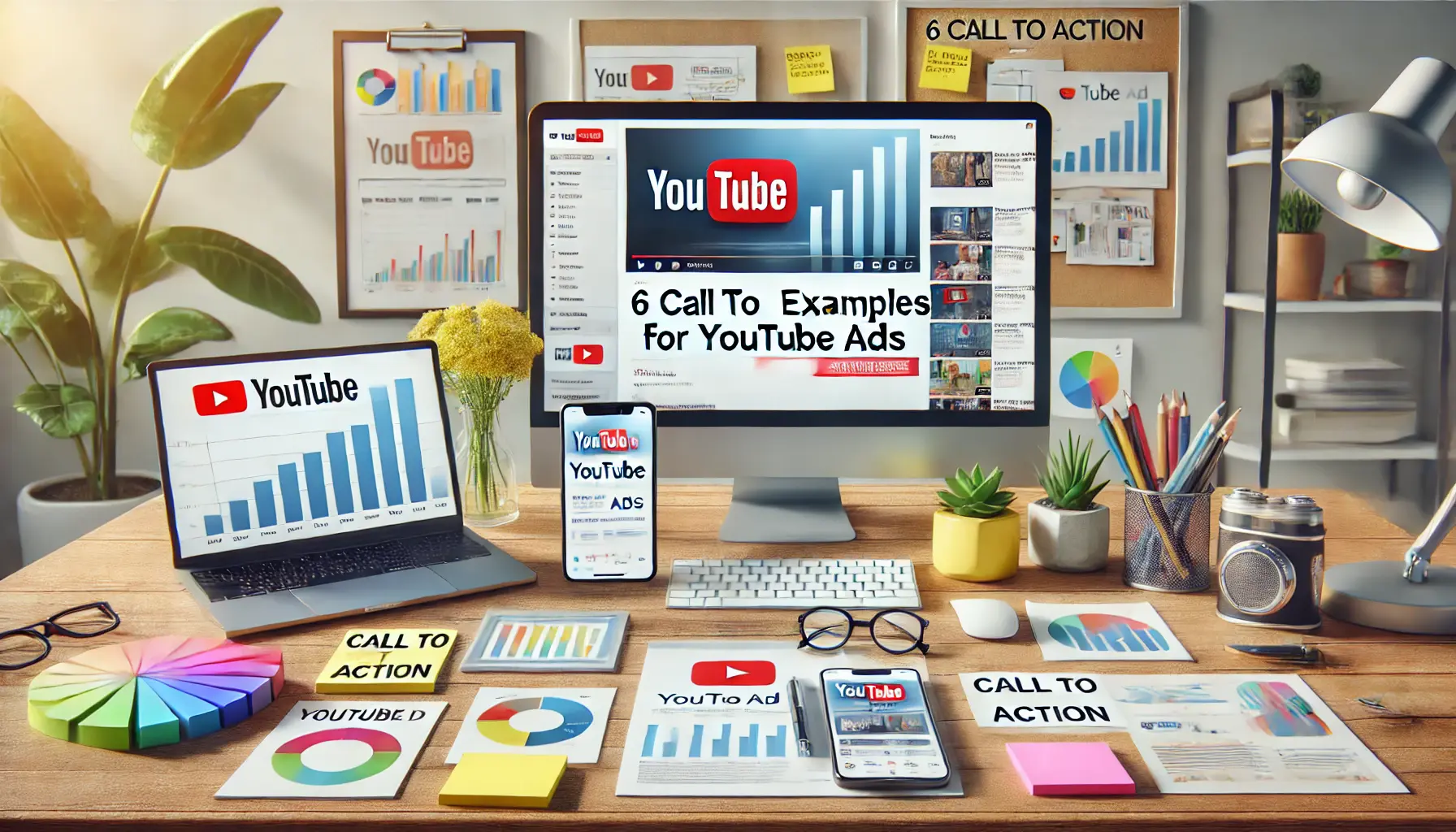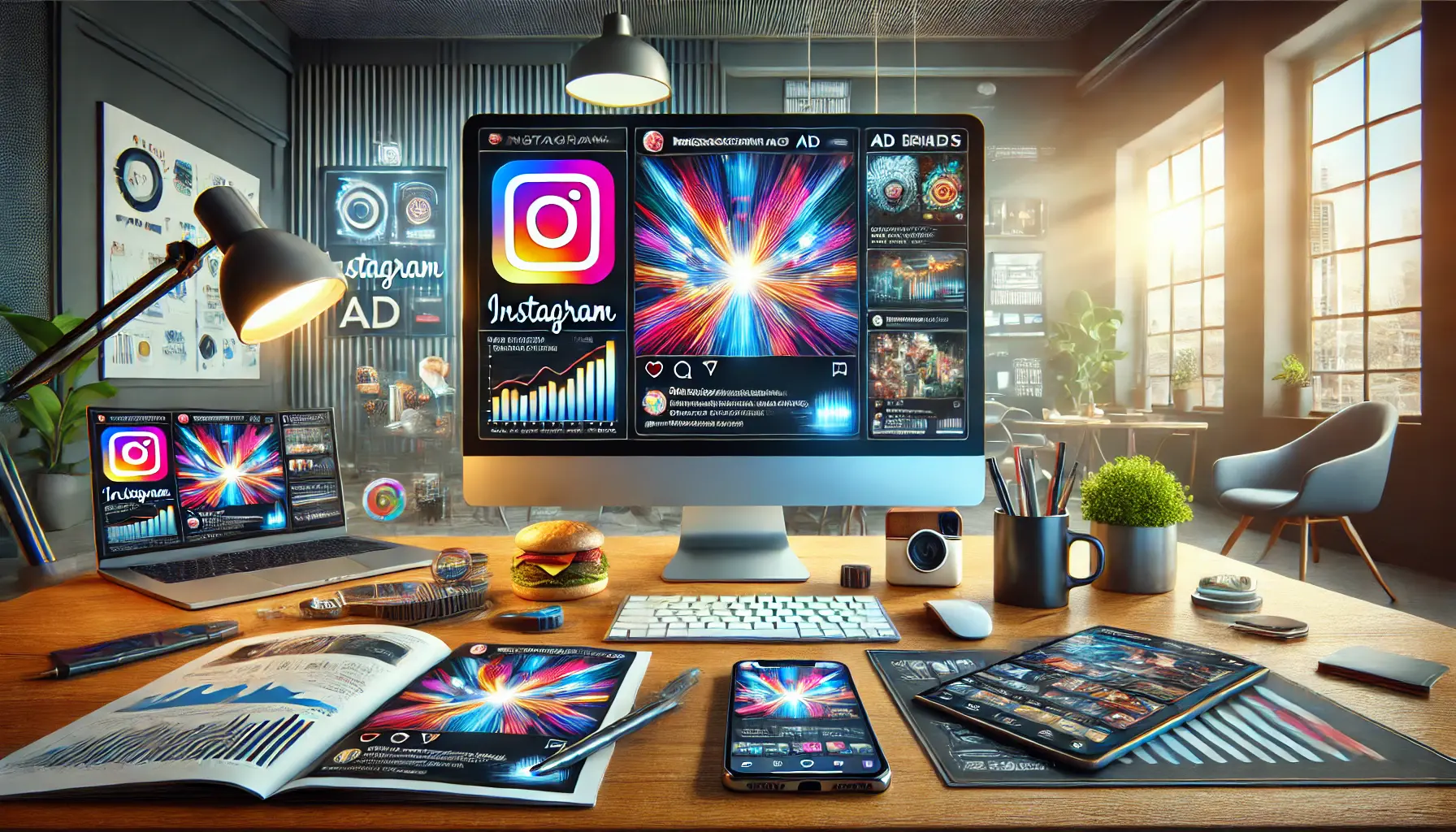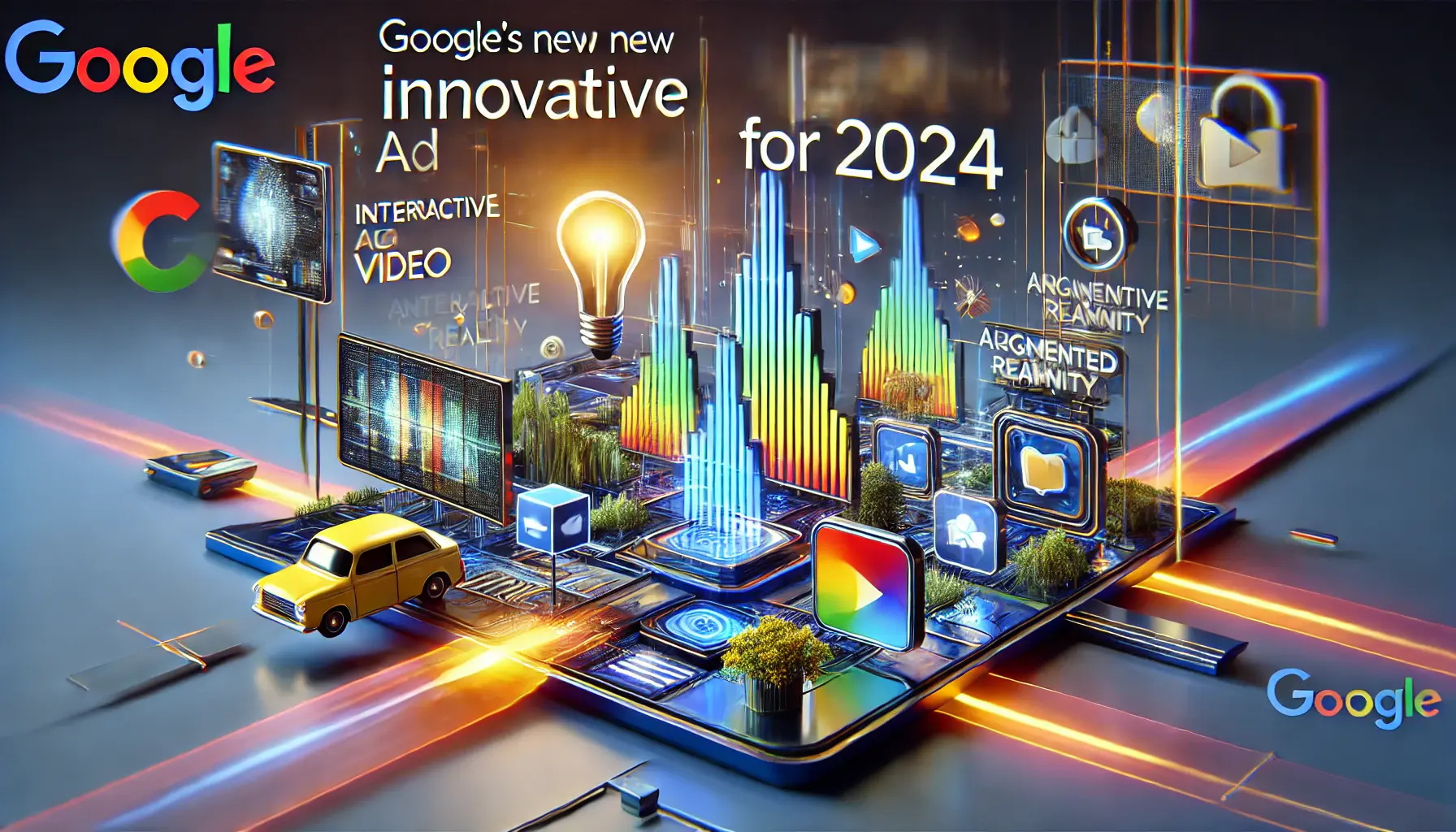In today’s digital world, reaching your audience more effectively has become even more competitive than ever before.
Among the immense number of brands competing for attention, the ability to maximize brand reach through innovative approaches can make all the difference in making your business stand out.
With Google Ads offering versatile tools and powerful targeting options, the opportunity for brands to extend their visibility becomes golden.
In this article, we will dive into three innovative Google Ad strategies that help in increasing brand reach, attracting potential customers, and leaving a lasting impression.
Whether you’re just beginning or advancing in your Google Ads journey, these approaches are designed to give your brand the exposure it needs and deserves.
- Understanding the Importance of Brand Reach in Google Ads
- Targeted Display Campaigns to Increase Reach
- Leveraging Video Ad Campaigns for Better Brand Reach
- Apply Responsive Search Ads to Maximize Brand Reach
- Leveraging Smart Bidding Strategies for Maximum Reach of Your Brand
- Maximizing Brand Reach with Google Ads: Key Takeaways
- Frequently Asked Questions on Maximizing Brand Reach with Google Ads
Understanding the Importance of Brand Reach in Google Ads
When it comes to growing a brand, nothing is more important than visibility.
Brand reach refers to the total number of unique users who come into contact with your brand.
This isn’t just about getting people to see your ad once; it’s about reaching as many relevant eyes as possible over time and building familiarity.
Brand reach is one of the most important metrics in any digital marketing campaign because it impacts brand awareness, trust, and, ultimately, conversions.
Google Ads offers powerful features that let you measure and maximize your brand reach.

Illustration of digital connectivity highlighting the importance of brand reach for business growth.
Why Brand Reach Matters for Growing Businesses
Brand reach is the backbone of any successful marketing strategy.
For a growing business, reaching the right audience fuels rapid growth and establishes credibility within the market.
Running a well-planned Google Ads campaign allows you to get your brand in front of prospects, making it more recognizable and trustworthy over time.
With a broader brand reach, you’re better positioned to capture interest, drive user engagement, and lead people down the conversionA desired action taken by a user, such as a purchase or sign-up. funnel.
- Increased Recognition: The more visibility your brand has, the more familiar people become with it. This helps build trust and recognition.
- Competitive Advantage: Expanding your reach keeps competitors at bay by ensuring your continued presence in the market.
- Improved Conversion Rates: Brand familiarity increases the likelihood of users choosing your products or services over unknown alternatives.

Illustration of brand awareness enhancing customer acquisition through trust and engagement.
The Role of Brand Awareness in Customer Acquisition
Brand awareness helps in converting casual browsers into loyal customers.
A high brand reach can help your business get noticed by potential customers who may not have discovered it otherwise.
With Google Ads, you can target these users at different stages of their buying journey, furthering brand awareness and keeping your brand top-of-mind when they’re ready to make a purchase decision.
- Top-of-Mind Awareness: Visibility keeps your brand top-of-mind among potential customers, making them more likely to revisit with an aim of conversion.
- Customer Loyalty: Awareness builds a closer relationship with your audience, which leads to increased loyalty over time.
- Organic Referrals: The more customers know about your brand, the more likely they are to refer others to you.
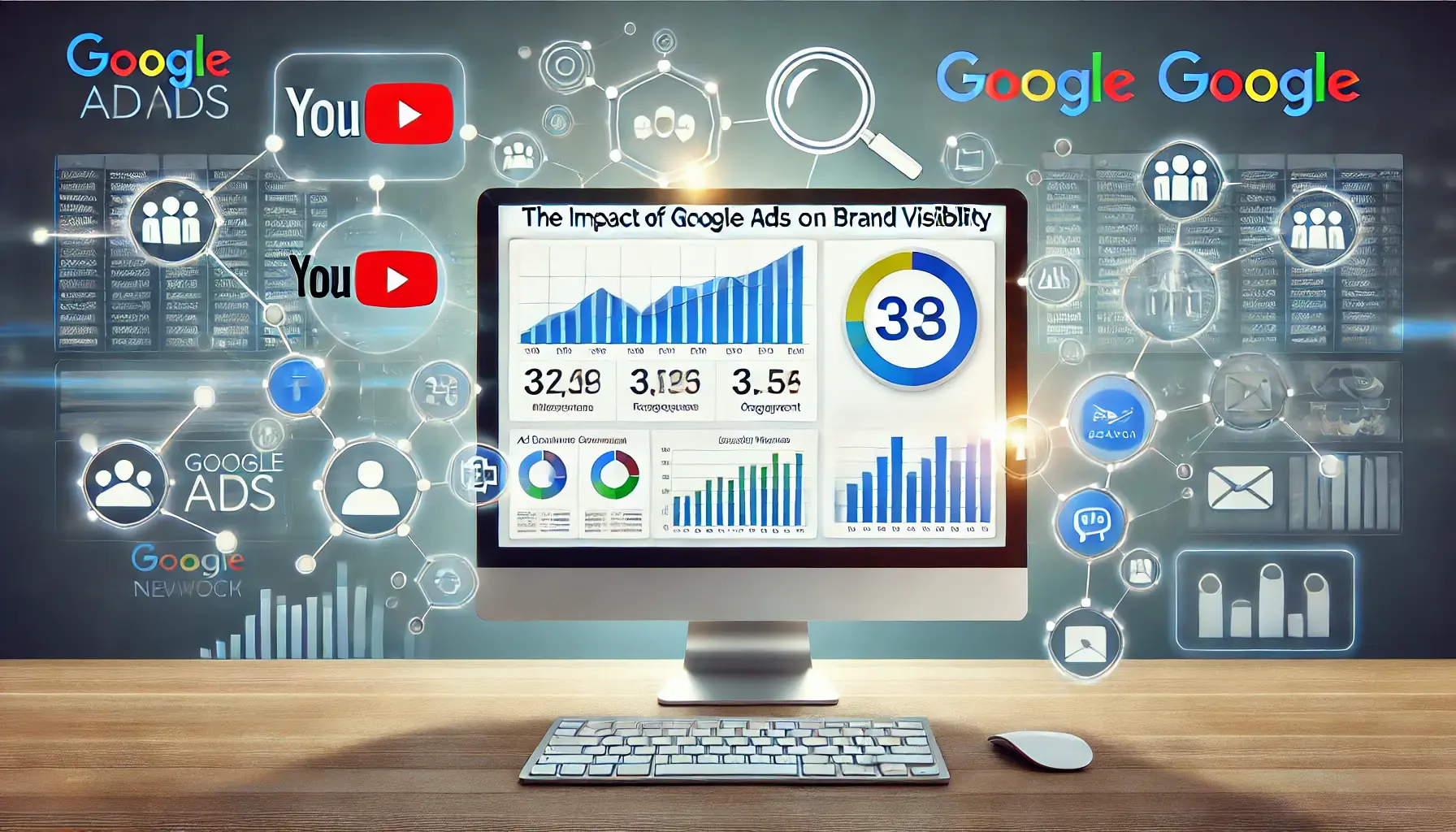
Illustration of Google Ads enhancing brand visibility through multi-channel reach.
How Google Ads Impacts Brand Visibility
When it comes to expanding brand visibility, Google Ads has no comparison.
From varied ad formats to precise targeting, Google Ads allows you to reach a wide audience and keep your brand in front of potential customers on multiple channels and devices.
This continued engagement builds a strong online presence, keeping your brand top of mind.
- Broad Audience Reach: Google Ads lets you reach millions of users globally or narrow down to a specific niche audience.
- Cross-Platform Exposure: Advertise across YouTube, Search, Display Network, and more for maximum reach.
- Retargeting Options: Use remarketing ads to keep your brand in front of past visitors interested in your products or services.

Illustration of a dashboard tracking key metrics essential for brand reach analysis.
Key Metrics to Track Brand Reach
To maximize brand reach, it’s essential to monitor relevant metrics within Google Ads.
These metrics provide insights into ad performance in terms of visibility and engagement.
Tracking the right metrics helps you adjust your campaigns, refine your strategy, and ultimately increase reach more effectively.
- Impressions: The number of times your ad is shown, indicating your brand’s visibility.
- Reach: The total number of unique users who see your ad, vital for understanding the breadth of your audience.
- Frequency: The number of times users see your ad, helping you balance between visibility and overexposure.
Brand reach is essential for digital growth, influencing visibility and familiarity in Google Ads campaigns.

Illustration of targeted display campaigns designed to broaden brand reach.
Targeted Display Campaigns to Increase Reach
Targeted display campaigns can be used to increase your brand reach and engage more users on the Google Ads platform.
Through display ads, you can reach users on various websites, apps, and other digital platforms.
The Google Display NetworkA collection of websites, including Google-specific sites like YouTube, where Google Ads can appear. provides a wide range of placement options, ensuring your ads appear more frequently to your target audience on relevant sites.
This level of targeting enables you to run highly personalized campaigns that users appreciate, thereby extending your brand and increasing visibility.

Illustration of audience segmentation strategies through demographic and interest-based targeting.
Effective Strategies for Segmenting Your Audience
Any display campaign starts with effective audience segmentation.
Google Ads offers various tools to segment your audience based on demographics, interests, and online behavior.
Crafting your ad for distinct segments ensures relevance in their interaction, which increases brand recall.
- Demographic Targeting: Segment your audience by age, gender, and household income to deliver tailored messages that resonate with specific groups.
- Interest Targeting: Reach users based on their hobbies, lifestyles, and interests, allowing your brand to align with their values and preferences.
- Behavioral Targeting: Target users based on their past online behavior, such as frequently visited websites or content they engage with, to capture relevant traffic.
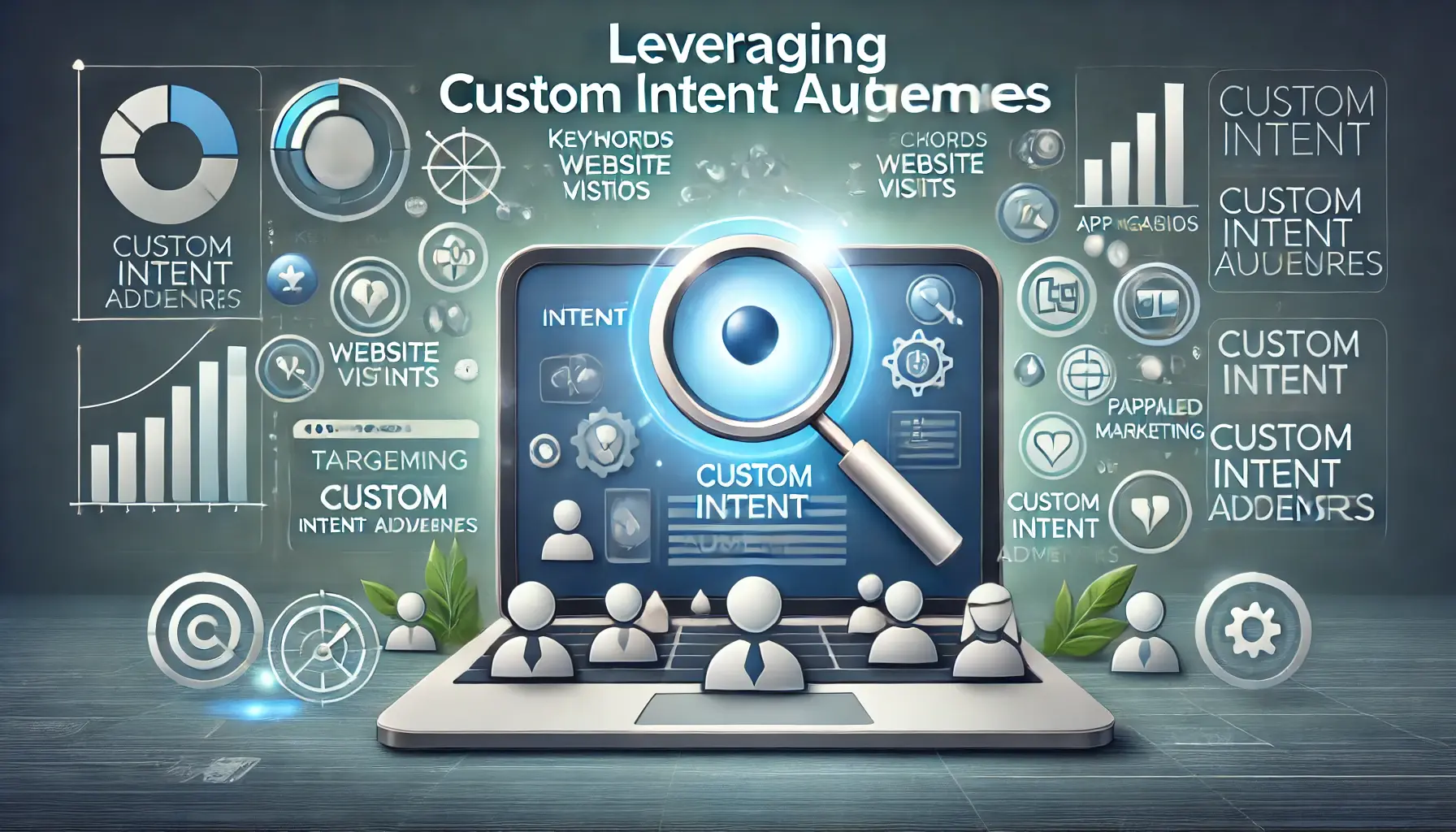
Illustration of custom intent audiences to enhance personalized marketing.
Leveraging Custom Intent Audiences
Custom intent audiences focus on displaying your ads to people actively searching for products or services related to your brand.
You can create a custom audience in Google Ads based on search terms, website visits, or app interactions.
This strategy taps into the intent of users, ensuring your display ads reach potential customers as they research products or explore solutions online.
- Keyword-Based Targeting: Target users by the keywords they search, aligning your display ads with their current needs and interests.
- URL Targeting: Reach users visiting specific websites, allowing you to connect with an audience interested in products or services similar to yours.
- App Targeting: Target users using specific apps, exposing them to your ads while using an app similar to your brand or a competitor’s product.
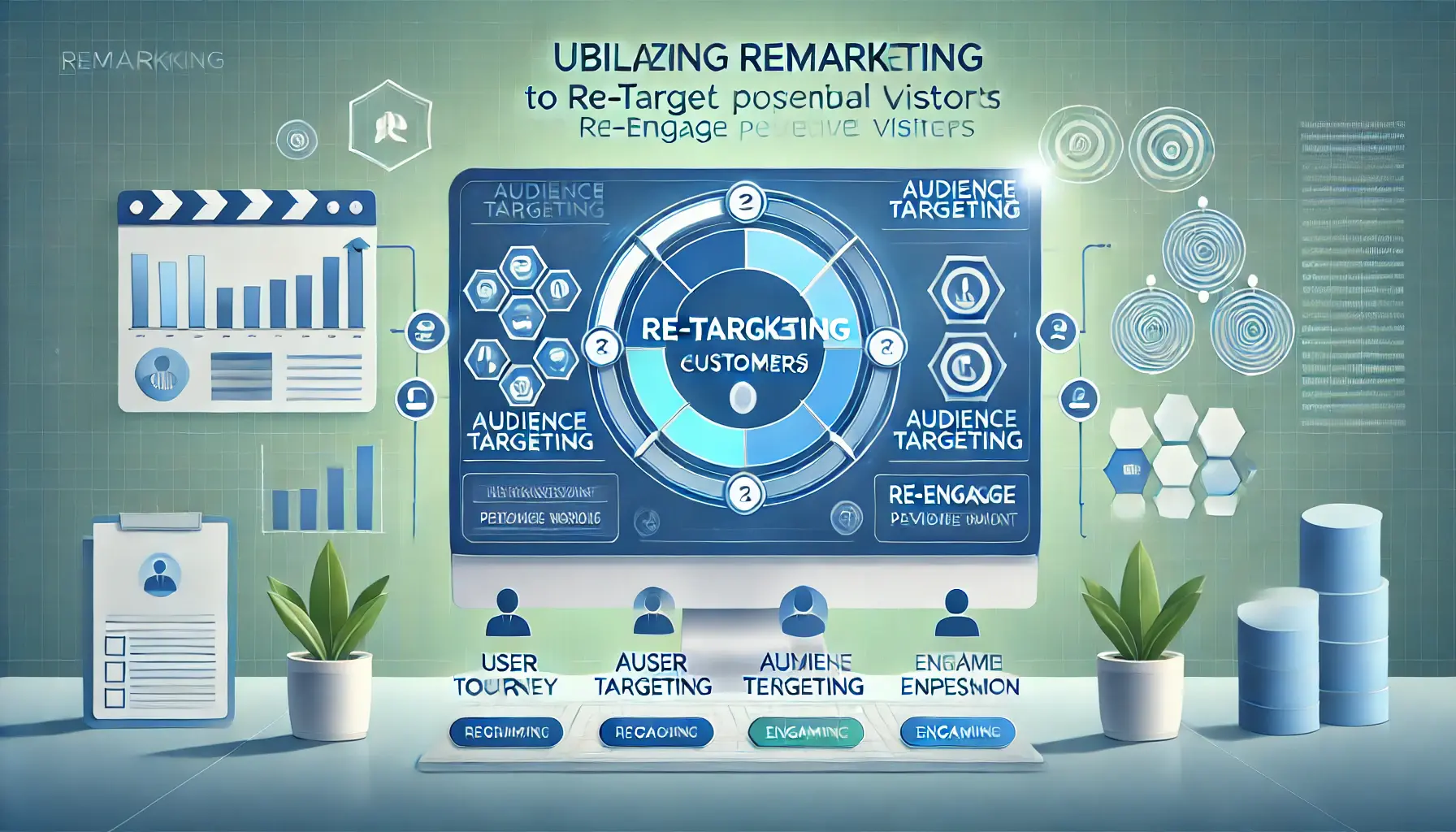
Illustration of remarketing strategies to re-target potential customers through repeated brand exposure.
Utilize Remarketing to Re-Target Potential Customers
Remarketing ensures your brand remains in front of users who have previously engaged with your site or app.
By using display ads to re-target these users, you can re-engage them, remind them of your brand, and encourage them to take specific actions.
This approach boosts brand familiarity, builds trust, and enhances the likelihood of conversion.
- Standard Remarketing: Show ads to users who have visited your website or app, bringing them back to your platform for further interaction.
- Dynamic Remarketing: Run ads featuring products or services that users previously viewed, making your ads more relevant and personalized.
- Video Remarketing: Reach users who viewed one of your YouTube videos, re-engaging them with your brand and encouraging them to explore your offerings.

Illustration of best practices for creating impactful and engaging display ads.
Creating Engaging Display Ads: Best Practices
Quality and appeal are key to creating display ads that capture attention and drive engagement.
Visually appealing, concise ads aligned with your brand message are essential for standing out.
Here are best practices to help make your display ads impactful and increase brand reach:
- Use High-Quality Images: Ensure your visuals are sharp, professional, and relevant to your brand and product.
- Keep Messaging Clear and Concise: Limit text to the essentials to quickly convey your message without overwhelming viewers.
- Strong Call-to-Action (CTA): Include clear prompts that encourage users to take the next step, whether it’s visiting your website, signing up, or making a purchase.
- Ensure Brand Consistency: Use consistent colors, logos, and fonts across all ads to strengthen brand recognition.
Targeted display ads on the Google Display Network expand brand visibility on multiple digital platforms.

Illustration of video ad campaigns to enhance brand reach and engagement.
Leveraging Video Ad Campaigns for Better Brand Reach
In the digital marketing ecosystem, video is one of the most engaging ways to capture audience attention and communicate brand messages effectively.
Google Ads offers a variety of video ad formats, allowing brands to extend their reach by engaging users on YouTube and the Google Display Network.
By implementing video ad campaigns effectively, you can create holistic, attention-grabbing experiences that resonate with your target audience, driving both user engagement and brand awareness.
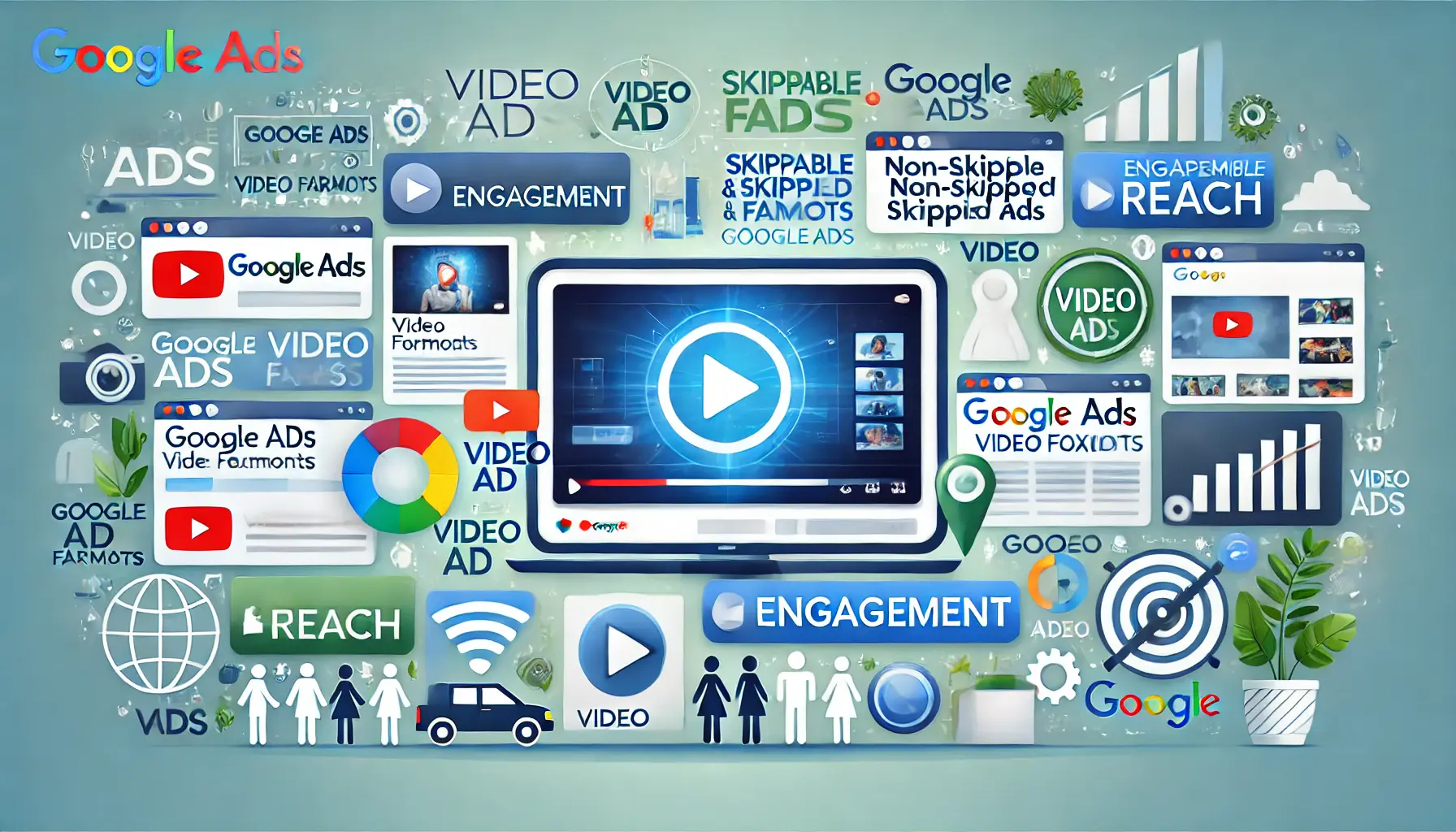
Illustration of diverse Google Ads video ad formats for audience engagement.
Understanding Google Ads Video Ad Formats
Google Ads provides several video ad formats, each serving a specific marketing purpose and catering to different audience behaviors.
Selecting the right format is crucial for maximizing brand reach and ensuring your message aligns with user expectations.
- Skippable In-Stream Ads: Ads that play before, during, or after other videos and can be skipped after five seconds. These are ideal for driving website traffic or promoting longer content.
- In-Feed Video Ads: Previously known as video discovery ads, these appear alongside related YouTube videos, within YouTube search results, or on the YouTube homepage, encouraging users to click to watch your content.
- Bumper Ads: Six-second, non-skippable ads that are perfect for delivering quick, memorable messages aimed at broad reach and brand awareness.
- Outstream Ads: Mobile-only ads that appear on partner websites and apps outside of YouTube, expanding your reach beyond the platform.
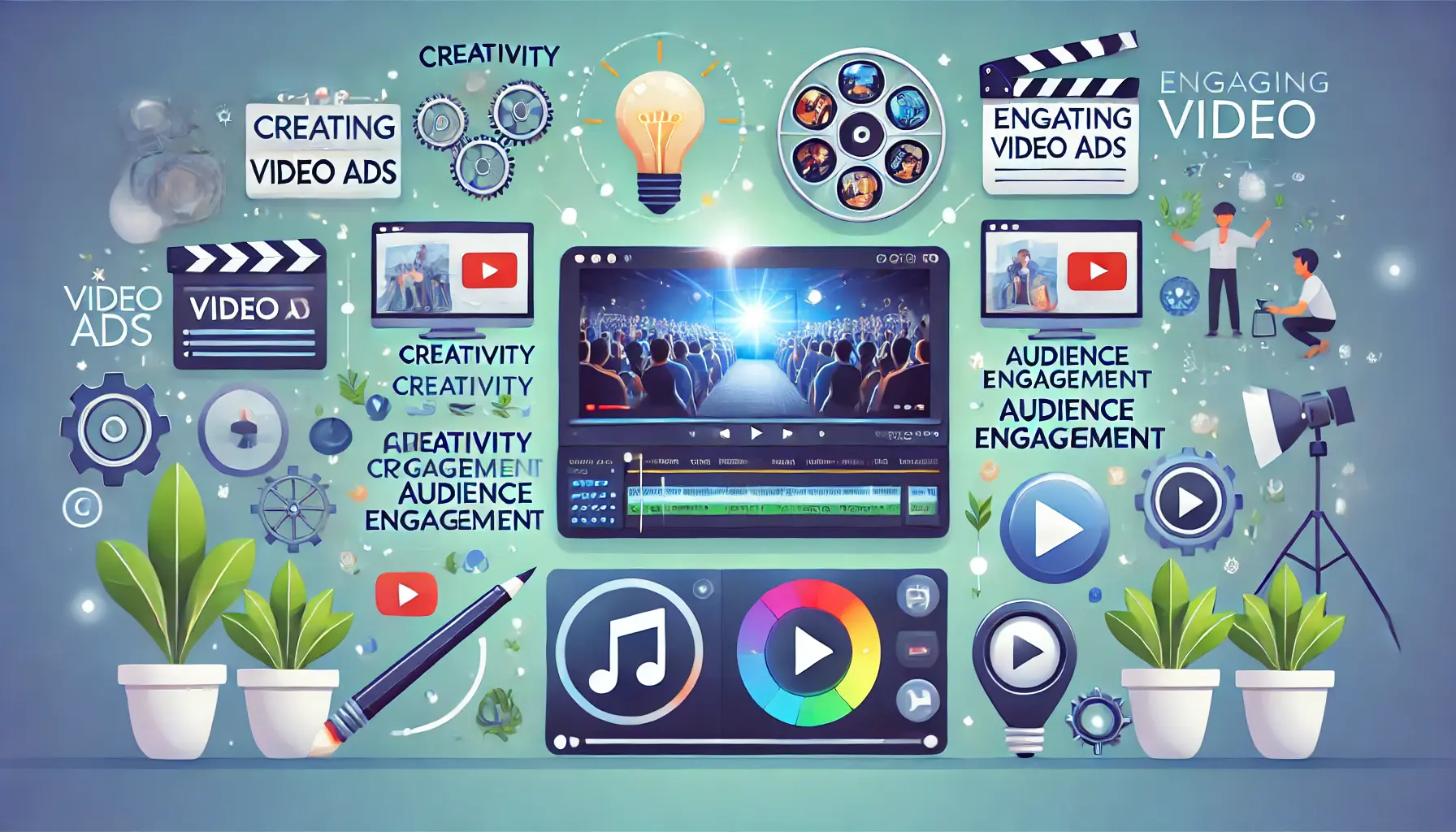
Illustration of key elements for creating effective and engaging video ads.
Best Practices for Creating Engaging Video Ads
To maximize the impact of your video ad campaigns, it’s essential to create content that captures attention and encourages viewer interaction.
Here are some best practices to consider:
- Hook Viewers Early: Capture attention within the first few seconds to prevent users from skipping your ad.
- Convey a Clear Message: Your brand message should be short and easily understood, even without sound.
- Include a Strong Call-to-Action (CTA): Guide viewers on the next steps, whether it’s visiting your website, subscribing, or making a purchase.
- Optimize for Mobile Viewing: Ensure your video looks good and is legible on mobile devices, as a large percentage of users view content on mobile.
- Ensure Brand Consistency: Use consistent branding elements, such as logos, colors, and messaging, to reinforce brand identity.
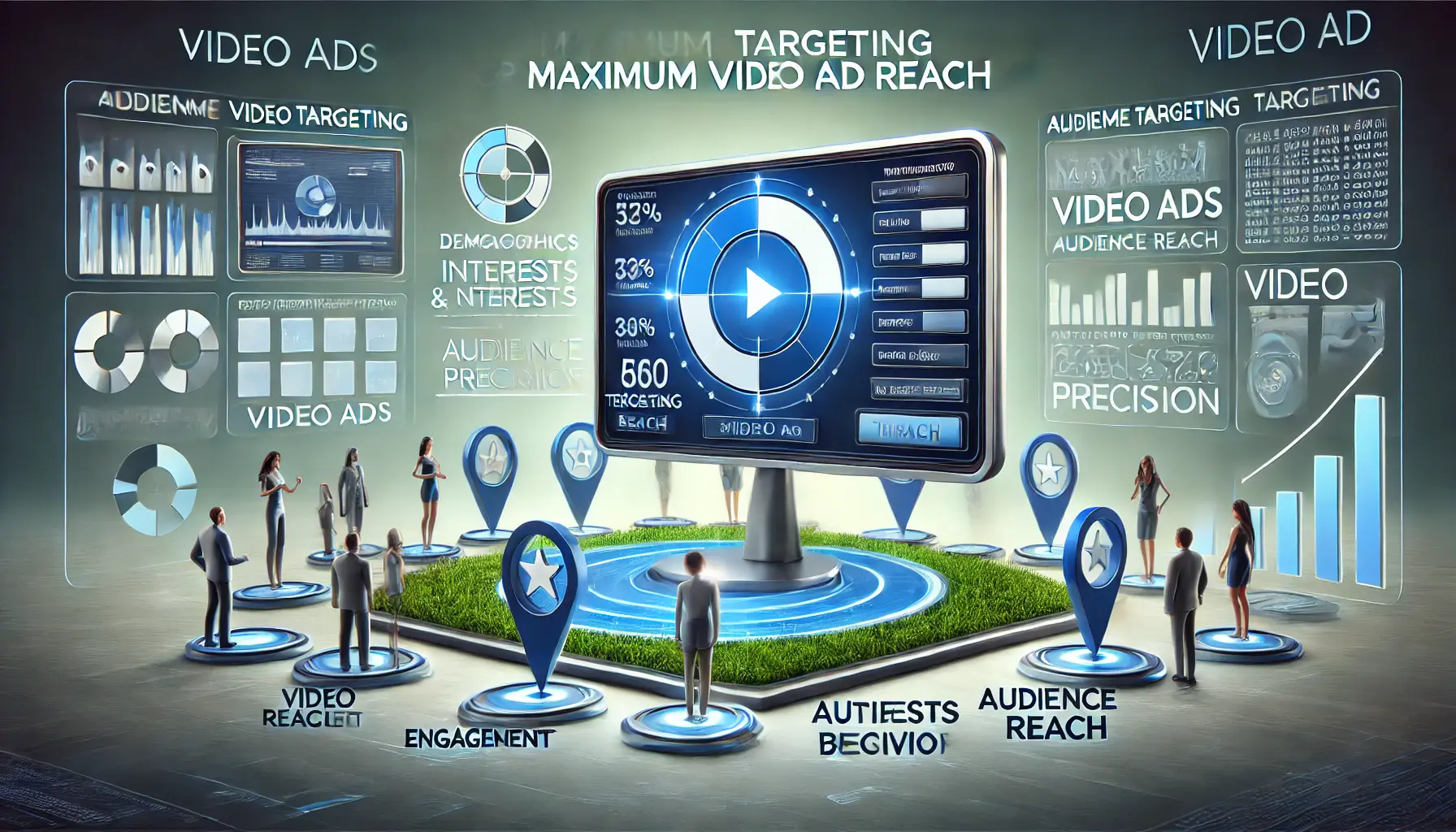
Illustration of targeting strategies to optimize video ad reach.
Targeting for Maximum Video Ad Reach
Effective targeting ensures that your video ads reach the most relevant audience, enhancing engagement and brand recall.
Google Ads provides various targeting options to connect with potential customers:
- Demographic Targeting: Focus on specific age groups, genders, parental statuses, or household incomes that represent your target market.
- Interest Targeting: Build interest-based audiences, reaching users based on their hobbies and preferences.
- Custom Intent Audiences: Target users whose search behavior indicates they are actively looking for products or services similar to yours using keywords and URLs.
- Remarketing: Re-engage people who have visited your website, reminding them of what your brand offers.
- Placement Targeting: Choose specific YouTube channels, videos, or websites where you want your ads to appear, aligning with your brand and audience.

Illustration of key metrics for evaluating the effectiveness of video ad campaigns.
Measuring the Success of Your Video Ad Campaigns
To assess the effectiveness of your video ad campaigns and optimize future efforts, it’s important to monitor key performance metrics:
- View Rate: The percentage of people who viewed your ad out of the total impressions, indicating the ad’s appeal.
- Click-Through Rate (CTR): The percentage of viewers who clicked on your ad, reflecting their interest in your content.
- Conversion Rate: The number of viewers who completed a desired action, such as purchasing or subscribing, after viewing your ad.
- Cost Per View (CPV): The average amount you pay per view of your ad, helping assess cost-effectiveness.
- Audience Retention: Measures how long viewers watch your video, providing insights into engagement.
By analyzing these metrics, you can gain valuable insights into your campaign’s performance and make data-driven decisions to further enhance your brand reach through video advertising.
Video ads engage audiences deeply, leaving a lasting brand impression across platforms like YouTube.

Illustration of responsive search ads enhancing brand reach through adaptable ad formats.
Apply Responsive Search Ads to Maximize Brand Reach
In the dynamic world of digital marketing, Responsive Search Ads (RSAs) have become a powerful tool within Google Ads for boosting brand reach.
RSAs allow advertisers to input multiple headlines and descriptions, which Google’s machine learning algorithms then test across various combinations to discover the most impactful messaging for different audiences.
This adaptability ensures that your ads appeal to a broader range of prospects, providing greater exposure for your brand.

Illustration of responsive search ads showcasing dynamic ad flexibility and audience targeting.
Understanding Responsive Search Ads
Responsive Search Ads are designed to balance flexibility and relevance in advertising.
By allowing up to 15 headlines and 4 descriptions, RSAs enable Google’s algorithms to mix and match these elements, aligning them with user search queries and behaviors.
This approach not only saves time but also increases the chances of your ads resonating with user intent, ultimately boosting engagement and expanding your brand’s reach.

Illustration of key practices for creating impactful responsive search ads (RSAs).
Best Practices for Creating Powerful RSAs
To enhance the effectiveness of your Responsive Search Ads, consider the following best practices:
- Diverse Headlines: Provide a set of varied headlines that showcase different aspects of your brand, products, or services. This variety allows the algorithm to test what resonates best with your audience.
- Incorporate Keywords: Use relevant keywords in headlines and descriptions to improve ad relevance and increase the likelihood of matching user search queries.
- Unique Descriptions: Create distinct descriptions that complement your headlines, offering additional value or information for users.
- Use Ad Strength Indicator: Google’s Ad Strength tool provides feedback on RSA performance and suggests areas for improvement.
- Avoid Redundancy: Ensure each headline and description conveys unique information to prevent repetitive messaging and keep ads engaging.

Illustration of the benefits of responsive search ads in increasing brand visibility and reach.
Benefits of RSAs for Amplifying Brand Reach
Implementing Responsive Search Ads offers several advantages that can significantly enhance your brand’s reach:
- Increased Visibility: The responsiveness of RSAs allows your ads to appear in more relevant searches, expanding your audience reach.
- Higher Performance: RSAs often lead to higher click-through rates and conversions due to continuous ad combination testing.
- Time Efficiency: RSAs reduce the need for manual A/B testing by automatically identifying the most effective ad combinations.
- Increased Relevance: RSAs dynamically adjust to user queries, maintaining ad relevance and improving user experience.

Illustration of monitoring and optimizing the performance of responsive search ads (RSAs).
Monitoring and Optimizing RSA Performance
To ensure that your RSAs effectively extend brand reach, it’s essential to monitor their performance and optimize them based on data:
- Analyze Performance Metrics: Review key metrics such as impressions, click-through rates, and conversions to gauge ad effectiveness.
- Refine Underperforming Assets: Identify which headlines or descriptions are underperforming and replace them with new variations for testing.
- Leverage Audience Insights: Utilize demographic and behavioral insights to tailor your ad messaging more precisely.
- Maintain Fresh Content: Regularly update headlines and descriptions to keep ads fresh and relevant.
By strategically implementing and continuously optimizing Responsive Search Ads, you can increase your brand’s visibility and connect with a broader audience in the competitive digital landscape.
Responsive Search Ads adapt to user behavior, expanding reach and enhancing engagement through automated testing.

Illustration of smart bidding strategies to maximize brand reach through dynamic bidding and performance tracking.
Leveraging Smart Bidding Strategies for Maximum Reach of Your Brand
In today’s ever-evolving digital marketing ecosystem, leveraging automated technologies like Smart BiddingA Google Ads feature that uses machine learning to optimize bids for better conversions. in Google Ads can make all the difference in extending your brand reach.
Smart Bidding uses machine learning to set bids in real-time, ensuring that your ads appear for the right audience at the most opportune moments for maximum visibility and engagement.

Illustration of smart bidding strategies for optimization and real-time bid adjustments in digital marketing.
Understanding Smart Bidding
Smart Bidding is a category of automated bid strategies within Google Ads that uses machine learning to optimize for conversions or conversion value in each auction.
This strategy considers a wide range of contextual signals, including device, location, time of day, and user behavior, to automatically adjust bids and help achieve nearly any marketing objective.
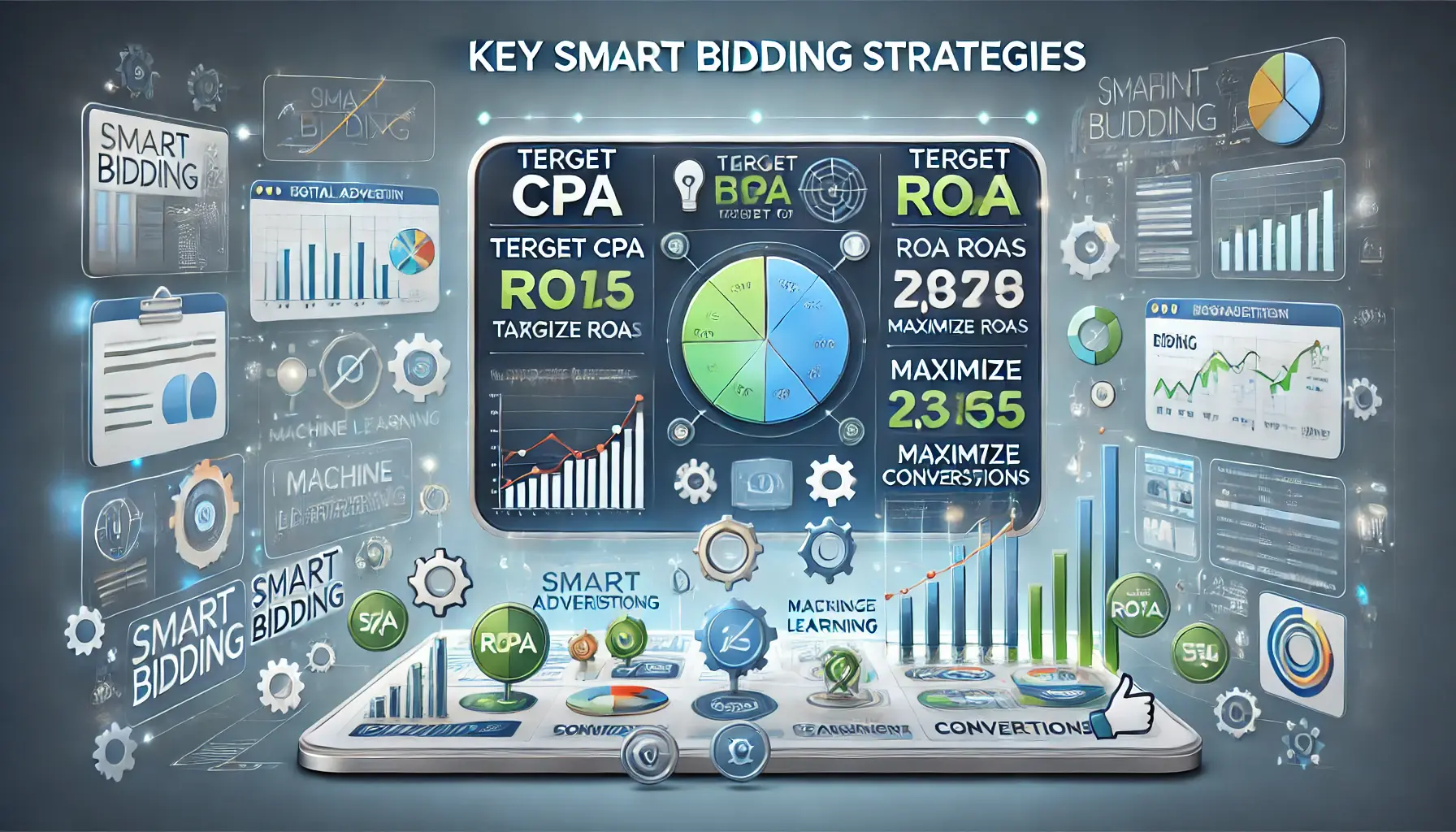
Illustration of various smart bidding strategies for optimizing ad campaigns.
Key Smart Bidding Strategies
Several Smart Bidding strategies within Google Ads focus on different marketing objectives:
- Target CPA (Cost Per Acquisition): Sets bids to help get as many conversions as possible at the target cost per action you specify.
- Target ROAS (Return on Ad Spend): Optimizes bids to maximize conversion value while aiming to meet the target return on ad spend.
- Maximize Conversions: Automatically sets bids to achieve the highest number of conversions within your budget.
- Maximize Conversion Value: Focuses on driving the highest possible conversion value within your budget.
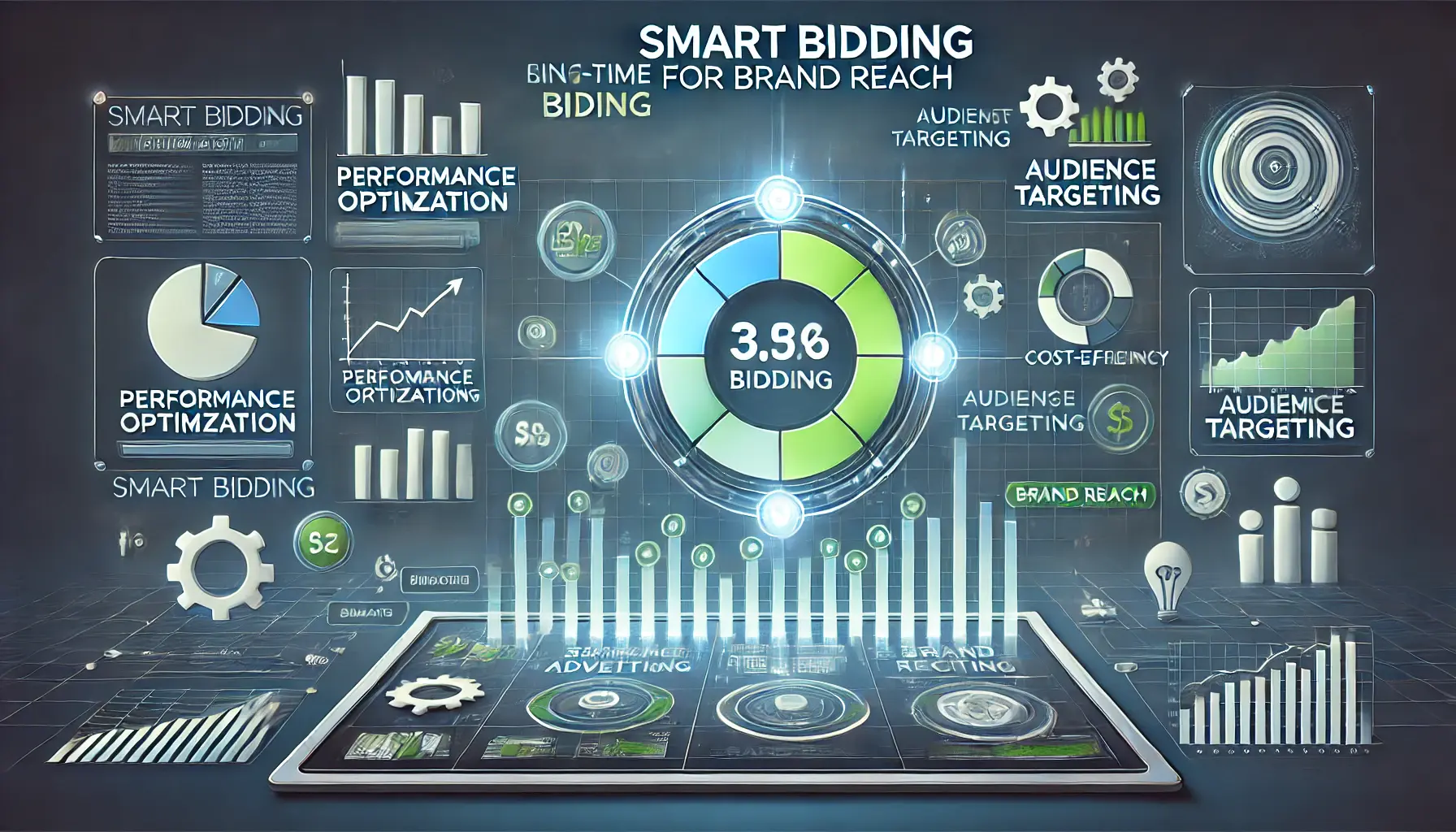
Illustration of the benefits of smart bidding in enhancing brand reach through real-time optimizations.
Benefits of Smart Bidding for Brand Reach
Using Smart Bidding strategies can provide several benefits in enhancing brand reach:
- Real-Time Optimization: Adjusts bids in real-time with thousands of signals, allowing your ads to reach the most relevant audience.
- Improved Performance: By focusing on conversions and conversion value, Smart Bidding can lead to heightened engagement and increased visibility for your brand.
- Time Efficiency: Automates the bidding process, freeing up time to focus on other strategic areas of your marketing campaigns.
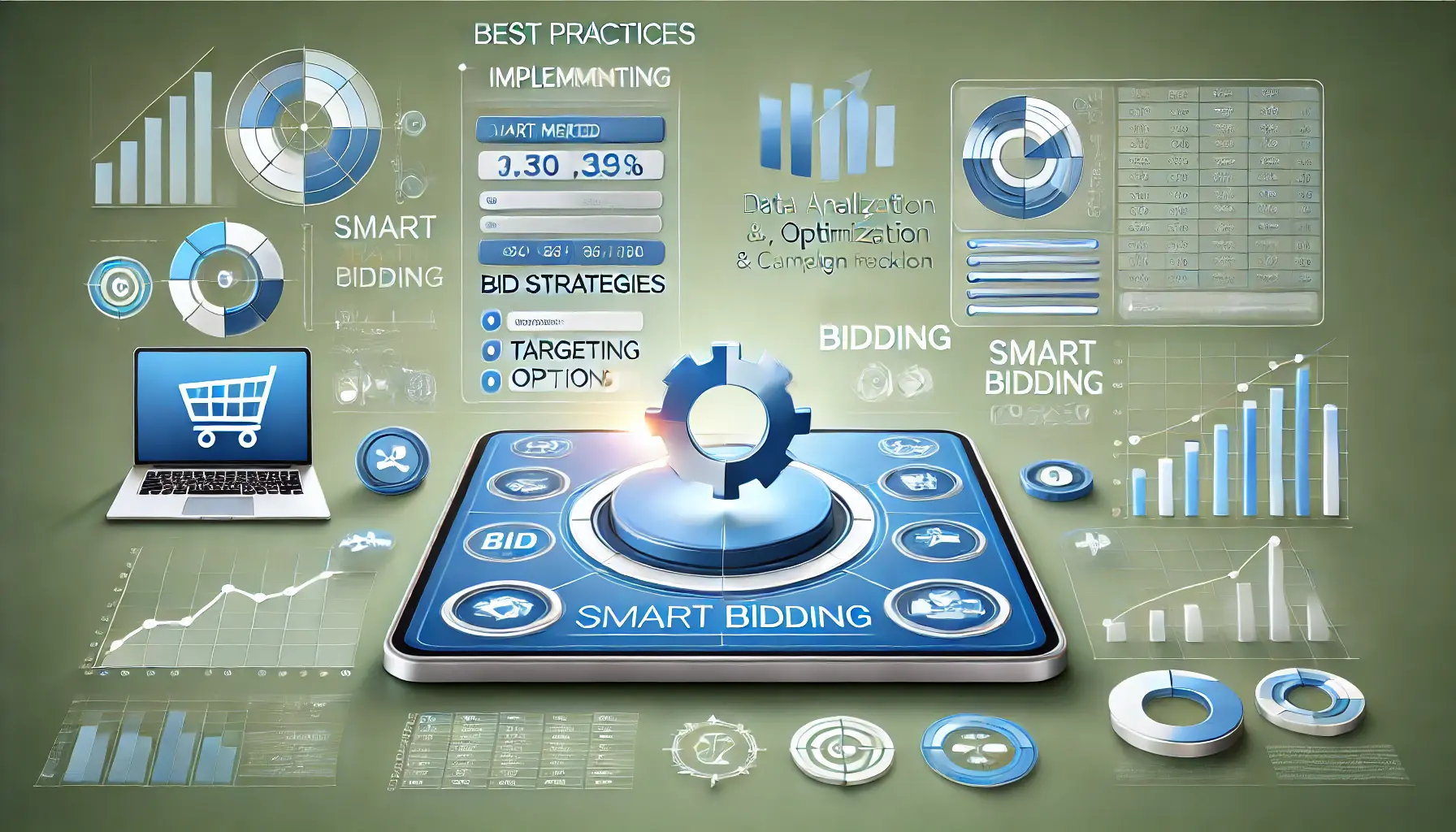
Illustration of best practices for effectively implementing smart bidding strategies in digital marketing.
Best Practices for Implementing Smart Bidding
To ensure effective use of Smart Bidding strategies, consider these best practices:
- Set Clear Goals: Define clear objectives, such as target CPA or ROAS, to enable the algorithms to optimize bids accordingly.
- Ensure Accurate Conversion Tracking: Implement robust conversion tracking to feed essential data into Smart Bidding for optimal performance.
- Allow Data to Accumulate: Give sufficient time and data for the algorithms to learn and perform efficient bid adjustments.
- Monitor and Adjust: Regularly review performance metrics to make strategic adjustments that align with your marketing goals.
By integrating Smart Bidding into your Google Ads campaigns, you can enhance brand reach by ensuring that your ads connect with the right audience at the right time, driving growth and engagement.
Smart Bidding uses machine learning to adjust bids, improving brand reach by targeting optimal audiences and maximizing conversions.

Illustration of strategies for maximizing brand reach with Google Ads through display ads, video ads, and smart bidding.
Maximizing Brand Reach with Google Ads: Key Takeaways
Building your brand in today’s competitive digital space is no easy feat, but with the powerful tools and features available on Google Ads, you can create a winning strategy.
Through innovative ad formats, diverse targeting techniques, and automated bidding, businesses can position their brand to reach a wider audience and enhance engagement.
This article covered several top-performing Google Ad strategies that can significantly improve brand reach and drive meaningful results for your marketing efforts.

Illustration of key strategies to expand brand reach through various digital ad formats and audience targeting.
Key Ways to Expand Brand Reach
Here are some essential Google Ads strategies for companies aiming to reach more users and establish lasting brand memorability:
- Targeted Display Campaigns: By using display ads, brands can reach users across multiple digital platforms, ensuring ads reach targeted audiences in relevant and meaningful contexts.
- Video Ad Campaigns: Video content captures audience attention and fosters brand awareness. Google’s Skippable and Non-Skippable video ad formats enable brands to create engaging campaigns that leave a lasting impression.
- Responsive Search Ads: These ads automatically adapt to user search behavior with multiple headlines and descriptions, increasing relevance and reaching more potential customers.
- Smart Bidding Strategies: Leveraging Google’s Smart Bidding capabilities, brands can automate bids based on real-time data, driving conversions and enhancing brand reach with time-efficient, automated solutions.

Illustration of best practices for achieving sustained brand reach through retargeting and audience engagement.
Best Practices for Sustained Brand Reach
To ensure Google Ads strategies remain effective in maximizing brand reach, follow these best practices:
- Use Data-Driven Insights: Analyze performance metrics regularly to make data-driven adjustments that optimize each campaign’s impact on brand reach.
- Set Clear Goals: Define specific objectives, such as a target CPA or ROAS, to help Google’s algorithms optimize effectively.
- Leverage Audience Segmentation: Create customized ads for specific demographics, behaviors, and interests to deliver personalized content that resonates with target audiences.
- Test and Adapt: Periodically experiment with different ad formats, messaging, and bidding strategies to determine the most effective approach for your brand.

Illustration of driving brand growth using Google Ads tools and performance tracking.
Driving Brand Growth Through Google Ads
Maximizing brand reach requires ongoing campaign monitoring and refinement.
Advanced Google Ads tools like Responsive Ads and automated bidding allow businesses to engage more customers, strengthen brand awareness, and increase conversions.
Whether your goal is acquiring new customers or building brand affinity, Google Ads offers both flexibility and precision for long-term growth and success.
By implementing these Google Ads strategies, you can unlock new opportunities, expand your brand’s reach, and maintain a competitive advantage in today’s digital world.
Through targeted campaigns, data-driven analysis, and optimized bidding, your brand will be well-positioned for sustained success and growth.
Leveraging Google Ads strategies like Smart Bidding and Responsive Ads boosts brand reach, engagement, and long-term growth.
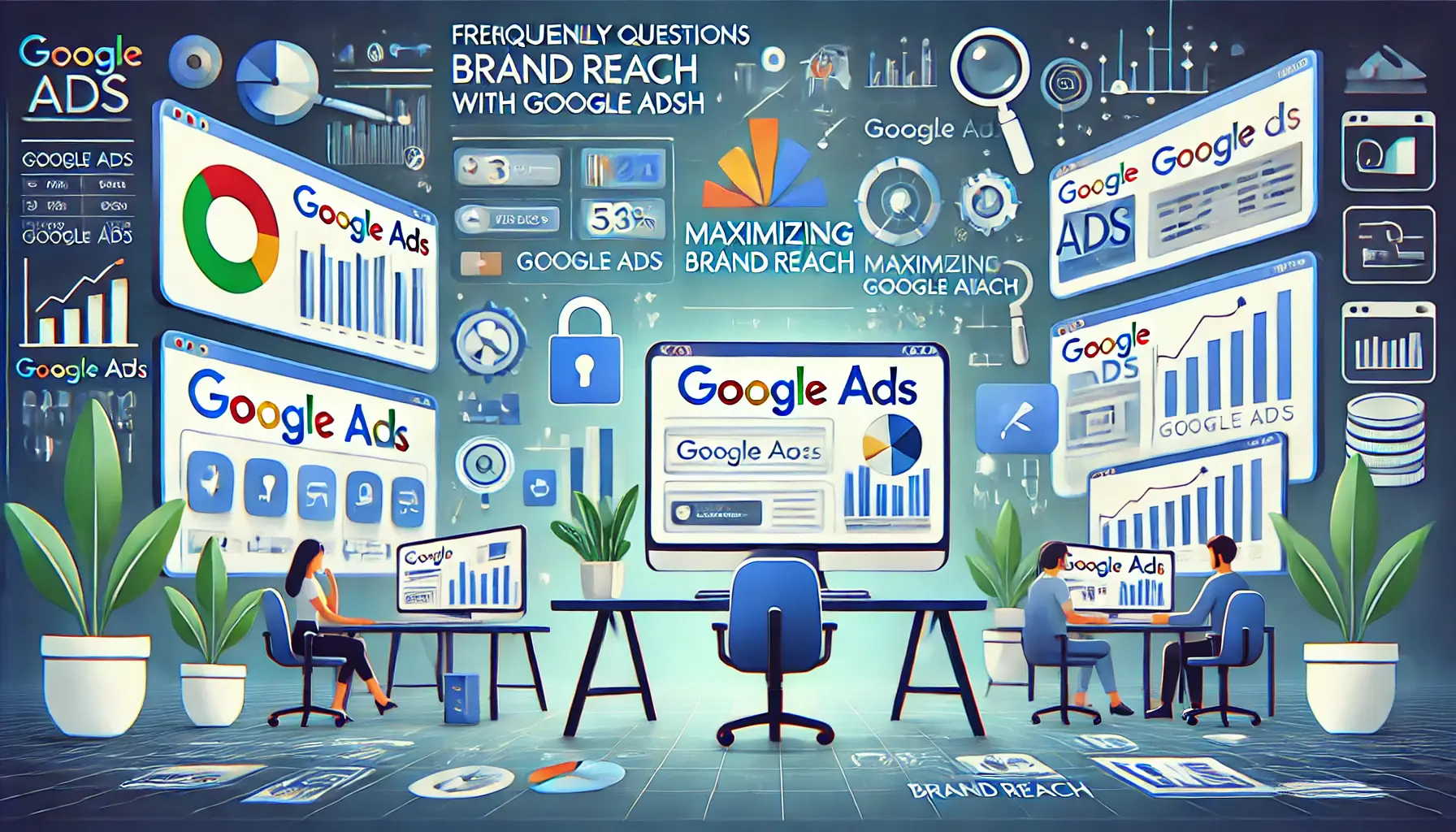
Illustration of frequently asked questions about maximizing brand reach using Google Ads tools and strategies.
Your campaigns can be managed by an agency specialized in Google Ads, check out our service page.
Frequently Asked Questions on Maximizing Brand Reach with Google Ads
Branding with Google Ads is a strategic process that requires careful planning and execution.
Here are common questions with concise answers to help you optimize your brand’s reach.
Brand reach refers to the total number of unique users who encounter your brand across different platforms, indicating the extent of your brand’s visibility.
Google Ads offers a variety of ad formats, targeting options, and automated bidding strategies to effectively expand your brand reach to more users.
Responsive Search Ads allow advertisers to input multiple headlines and descriptions, enabling Google’s machine learning to test combinations and serve the most relevant ad to each user.
Smart Bidding uses machine learning to optimize bids in real-time, aiming to maximize conversions or conversion value based on the goals you specify.
Video ads capture audience attention, effectively convey brand messages, and can significantly enhance brand awareness and engagement.
Segmenting your audience allows for personalized ad delivery, ensuring relevance and increasing the likelihood of engagement and conversions.
Remarketing targets users who have previously visited your website or engaged with your brand, keeping your offerings top-of-mind and encouraging them to return or convert.
Monitor key performance indicators such as impressionsThe number of times an ad is displayed to users., click-through rates, conversions, and return on ad spend to gauge and optimize campaign effectiveness.
Use high-quality images, clear messaging, strong calls-to-action, and maintain brand consistency to create eye-catching display ads that resonate with your audience.

